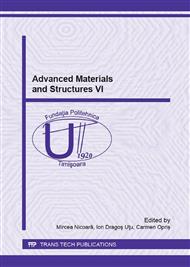p.55
p.60
p.65
p.71
p.77
p.83
p.91
p.97
p.102
A Comparison of Flame Coating and Laser Cladding Using Ni Based Powders
Abstract:
This paper addresses to the characterization of Ni based coatings realized by two different processes e.g. thermal spray coating and laser cladding. For the relevance of the experimental tests, the same base material, AISI 5140 and Metco 15E powder was used. The results highlight the advantages and disadvantages of the both techniques. The cladded layer obtained through laser cladding is pore and crack free, being characterized by a high hardness and a very good adherence to the substrate, while the flame coating presents oxides inclusions, high porosity, lower hardness and minimal dilution with the substrate as resulted from the EDS analyses. In depth characterization of the samples is made using optical and scanning electron microscopy, EDS analysis and microhardness testing.
Info:
Periodical:
Pages:
77-82
Citation:
Online since:
August 2016
Keywords:
Price:
Сopyright:
© 2016 Trans Tech Publications Ltd. All Rights Reserved
Share:
Citation:


